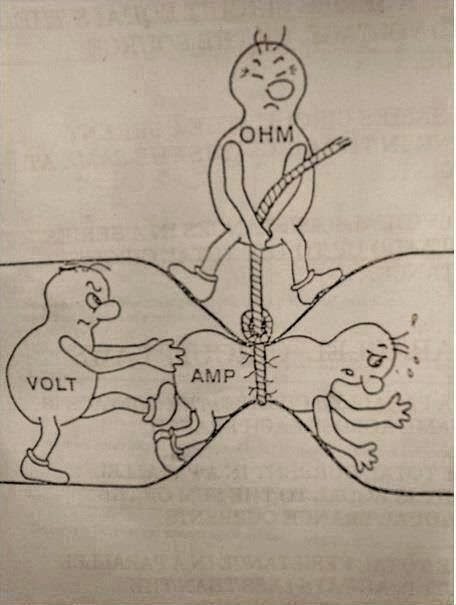Understanding Ohm's law
Every electrical engineer knows ohm's law:-
Now what is Ohm's law?
Ohm law is relationship between Voltage, Current and resistance. This law states that Potential difference across an ideal conductor is proportional to current through it.
i.e. Voltage = IR
where R is known as Proportionality constant and also know as Resistance to current flow across conductor.
This is linear law. But very useful for solving simple circuits.
Basic Electrical rule that follows Ohm law is shown in pic by very interesting means:-
You will love to see how electrical basics can been represented in such an interesting manner.
Now what is Ohm's law?
Ohm law is relationship between Voltage, Current and resistance. This law states that Potential difference across an ideal conductor is proportional to current through it.
i.e. Voltage = IR
where R is known as Proportionality constant and also know as Resistance to current flow across conductor.
This is linear law. But very useful for solving simple circuits.
Basic Electrical rule that follows Ohm law is shown in pic by very interesting means:-
You will love to see how electrical basics can been represented in such an interesting manner.
By Ohms law Voltage= Current X Resistance
Voltage in Volts
Current in Amp
And Resistance in Ohm
From above pic it is very clear that more the potential difference more will be current . Resistance always restricts flow of current.
As Per Ohm's Law current flow through a conductor is directly proportional to voltage or Potential difference across two points and inversely proportional to resistance of conductor at a given temperature.
Resistance is directly proportional to resistivity which depends upon temperature of material.
Ohm Name is given after Name of German physicist Georg Ohm who has given the law in 1827.


Comments
Post a Comment